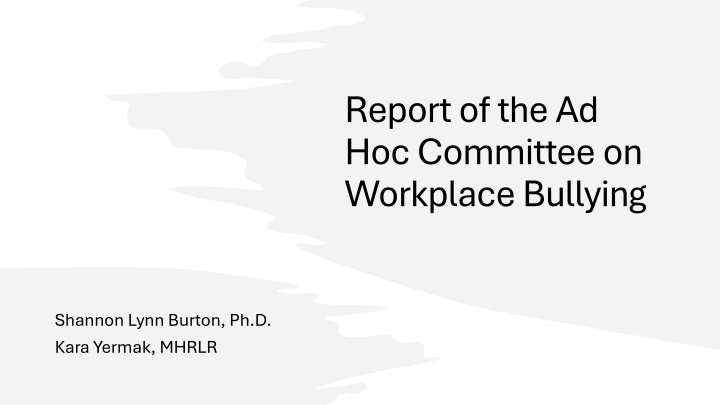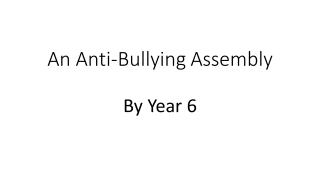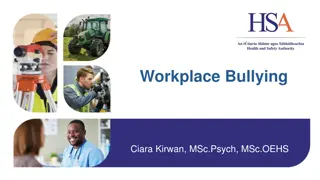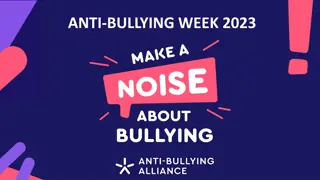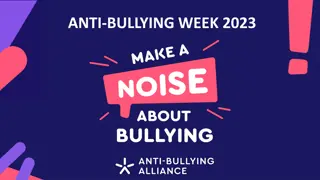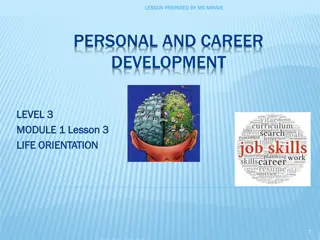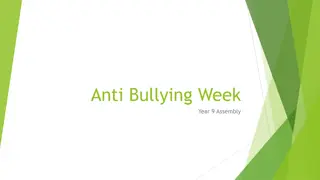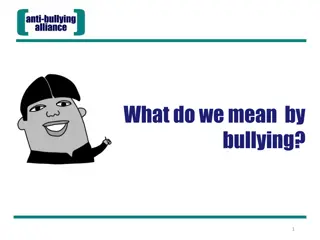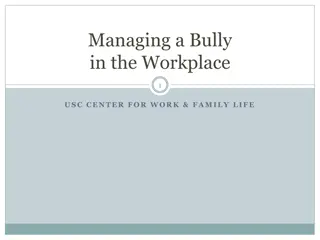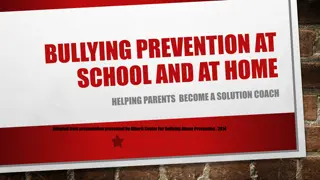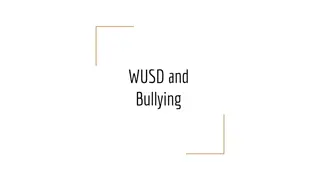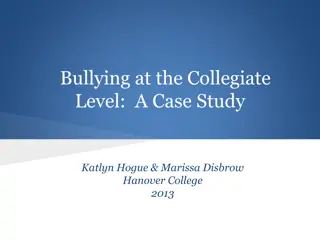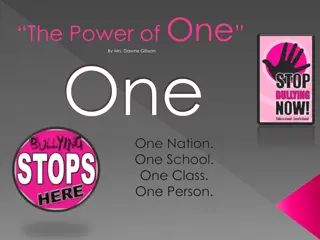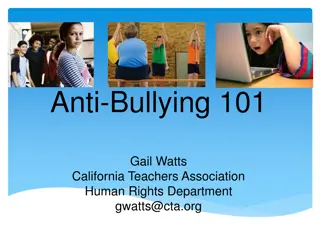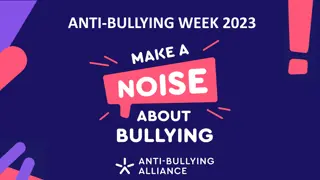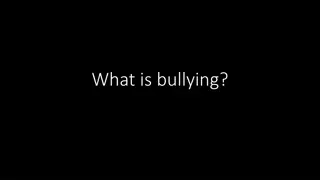Workplace Bullying Committee Report
The report outlines the establishment, purpose, and goals of the Ad Hoc Committee on Workplace Bullying at a university. It details the definition of workplace bullying and harassment, key members, and the process involved in defining workplace bullying. The report emphasizes the importance of addressing toxic work environments and provides recommendations for prevention.
Download Presentation

Please find below an Image/Link to download the presentation.
The content on the website is provided AS IS for your information and personal use only. It may not be sold, licensed, or shared on other websites without obtaining consent from the author.If you encounter any issues during the download, it is possible that the publisher has removed the file from their server.
You are allowed to download the files provided on this website for personal or commercial use, subject to the condition that they are used lawfully. All files are the property of their respective owners.
The content on the website is provided AS IS for your information and personal use only. It may not be sold, licensed, or shared on other websites without obtaining consent from the author.
E N D
Presentation Transcript
Report of the Ad Hoc Committee on Workplace Bullying Shannon Lynn Burton, Ph.D. Kara Yermak, MHRLR
On February 25th, 2020, University Council approved the creation of the Ad Hoc Committee on Workplace Bullying. This action was in response to a resolution from COGS (Resolution 19-FS-21) dated December 4, 2019. COGS cited that many of their peers were subject to toxic work environments and that there were few avenues to address issues of workplace bullying and harassment within the institution and that it was impacting student success and retention. Origins of Ad Hoc Committee
Ad Hoc Committee Purpose 1. Create a definition of workplace bullying and harassment; and Create a set of recommendations for preventing and addressing workplace bullying. 2.
Meagan Abel, President of the Council of Graduate Students Melissa Ortiz, Director of Human Resources for the Associated Students of Michigan State University Dr. Ayalla Ruvio, Faculty Senate representative Dr. Claudia Finkelstein, University Committee on Faculty Affairs representative Kara Yermak, Director of Academic Human Resources Jeff Brodie, Senior HR and Budget Analyst with Human Resources Dr. Shannon Lynn Burton, University Ombudsperson (ex-officio) Dr. Barbara Roberts, Executive Director of the WorkLife Office (ex-officio) Members (February 2020 September 2022) *Legal review and input provided by Theresa Kelley and Jackie Kittel from the Office of the General Counsel.
Goal: Establish a clear, comprehensive definition of workplace bullying. Process: Extensive research on existing definitions from peer institutions and other organizations. Collaborative discussions led by Dr. Roberts and Meagan Abel. Phase I: Defining Workplace Bullying Importance: This definition provides clarity and serves as the foundation for creating policies and responses at MSU.
Any electronic, written, or verbal communication, or physical act, or series of acts directed toward a person that a reasonable person would know: 1. Has the purpose or effect of unreasonably interfering with an individual s employment or educational performance; and/or 2. Has the purpose or effect of creating an intimidating, hostile, offensive, or abusive climate for an individual s employment, academic pursuits, living environment, or participation in a university activity. Bullying does not include conduct that serves a legitimate purpose. Workplace Bullying & Harassment Definition (Presented to University Council February 22nd, 2022)
Goal: Provide actionable steps for addressing workplace bullying and harassment at MSU. Process (3 Subcommittees) Gathering Information on Current Processes: 1. Surveying current systems for handling workplace bullying. 2. Identifying gaps and inefficiencies in existing policies and processes. Benchmarking at Peer Institutions: 1. Reviewing best practices from peer institutions. 2. Identifying successful strategies for prevention and resolution. Identifying Legal Considerations: 1. Reviewing legal frameworks relevant to bullying and harassment. 2. Ensuring compliance with institutional, state, and federal regulations. Phase II: Recommendations to Prevent and Address Workplace Bullying
Implementation of the above definition of workplace bullying and harassment. Implementation should consider determinations around who is responsible for the policy; what the process would look like, and which conduct would be covered by the policy. Revisiting the report written in 2018 by the WorkLife Office and further examining their recommendations not only for responding to workplace bullying and harassment, but also in relation to preventative programming and supports. Recommendations
Dignity at Work Policies: Implement policies that clearly articulate expectations and provide a shared language for understanding bullying and harassment. Routine Stress Audits: Regularly assess workplace stress to identify potential bullying risks. Workplace Bullying Prevention Trainings: Offer ongoing training and workshops to educate employees and leaders on preventing bullying. Workplace Climate Surveys: Use tools like the NAQ-R (Negative Acts Questionnaire) to regularly survey the workplace climate, identifying trends and areas for improvement. 2018 WorkLife Recommendations
Additional insights, particularly regarding how the recommendations align with the experiences and needs of the constituencies they represent; and Identify potential barriers to implementation and suggest strategies to overcome them. University Council Ask Email these to Dr. Shannon Lynn Burton (sburton@msu.edu)
Questions? Additional Resource: www.workplace.msu.edu
